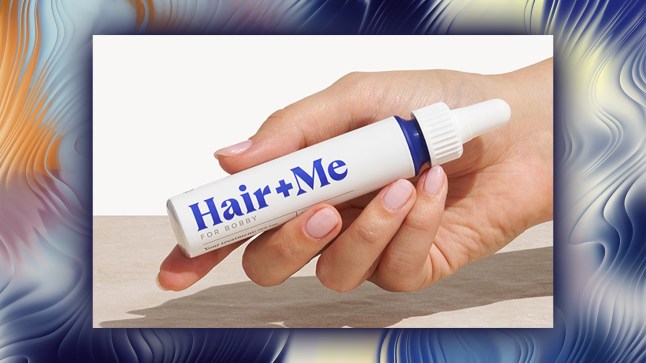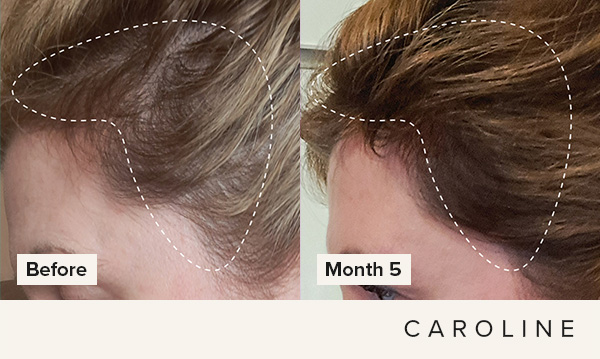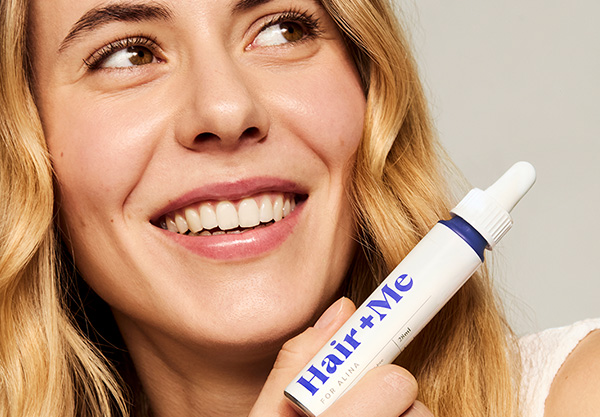19 Nov, 2025 | Admin | No Comments
Princess Kate’s ‘luxurious’ £3,750 tribute to Princess Charlotte we nearly missed

The Princess of Wales paid tribute to her daughter, Princess Charlotte, on 18 November as she attended The Future Workforce Summit at Salesforce Tower in London, wearing the earrings she donned to Charlotte’s christening in 2015.
19 Nov, 2025 | Admin | No Comments
The custom hair-growth solution that’s giving people thicker hair fast is now on sale

Metro journalists select and curate the products that feature on our site. If you make a purchase via links on this page we will earn commission – learn more
Some may be familiar with the beauty subscription service Skin + Me, who send out bespoke skincare solutions straight to your door.
Well, this personalised solution-based brand now has a haircare obsessed little sister –Hair + Me.
Designed for those after a solution to hair loss and thinning, Hair + Me is all about haircare solutions that work for you – no one-size-fits-all treatments here – and users have seen results in as few as three months.
A prescription service but not as you know it, Hair + Me formulas are created alongside expert medical professionals and dermatologists, and are bespoke to your hair needs, utilising ingredients that have been scientifically-proven to aid healthy hair growth.
The best bit? You can score three months of your personalised haircare treatment for just £14.99 per month with code HMETRO – a huge saving of 55%.

Hair + Me Subscription
If you're struggling with hair loss, fine hair or damaged locks, then Hair + Me’s prescription service can help find a solution. Simply complete the free online consultation, share details of your lifestyle, hair type and concern, which the in-house experts will use to create a personalised solution for you. Enter code 'HMETRO' at the checkout to claim the reduced price for three months.
Whether you’re battling with hair loss, notice your scalp is dry and flakey, or you simply want to give your hair a dose of hydration to get that glossy finish back, Hair + Me has a solution for it all.
And no, you don’t need to wait a month for a GP appointment to get your bespoke solution.
All you need to do is simply complete a free online consultation where you’ll be asked to describe your hair type, hair goals, lifestyle and medical history.
This will help the Hair + Me experts better understand how to address your specific hair concerns and the potential causes behind them that they can help combat.
Hair + Me will then create a bespoke prescription tailored to your needs, and will be continually on hand for any questions, progress check-ins andprescription adaptations if necessary.
Genius right?
But what does your healthy hair solution look like? Hair + Me offers two treatment types, The Drops and The Capsules, but the best option for you will be determined by the expert dermatologist at Hair + Me and your own preferences.
Both treatments use hair growth ingredients, including Minoxidil, Finasteride and Dutasteride, which are known to improve healthy growth by stimulating blood flow to the hair follicles for thicker and fuller hair.
They also feature lavender, tea tree and eucalyptus oils, which are nourishing and gentle on the skin.
The Drops can be applied directly to your scalp, and aim to encourage healthy hair growth in three to six months. The Capsules are prescribed active ingredients you take daily – the brand’s more popular option.
The real beauty of this hero haircare? You never have to worry about running out.
Each tailored solution is cleverly dosed so that you only use or take what you need each day. Then, before you run out, your monthly top-up will arrive in the post. What could be easier?
What’s even more unique about this service is the ongoing support and regular check-ins – much like having a private haircare expert in your pocket.
Hair getting thicker? Ready to move onto a more potent dose? Preferences changed? All you need to do is ask and your personal solution will be amended to suit you.
Ready to see what all the fuss is about? Snap up your first three months of Hair + Me personalised haircare for just £14.99 per month with code HMETRO and achieve your dream hair fast.
Follow Metro across our social channels, on Facebook, Twitter and Instagram
Share your views in the comments below
19 Nov, 2025 | Admin | No Comments
Audrey McGraw’s naked dress and pixie-cut combo gives off modern-day Audrey Hepburn vibes

Faith Hill and Tim McGraw’s youngest daughter turned up the heat in a naked dress as she showed off her new pixie-cut hairstyle which gave off Audrey Hepburn vibes
19 Nov, 2025 | Admin | No Comments
Loved Princess Kate’s camel coat? M&S just dropped a chic £56 lookalike

The Princess of Wales always looks amazing in her Max&Co camel coat. Channel Kate Middleton with Marks & Spencer’s camel coat in the Black Friday sale.
19 Nov, 2025 | Admin | No Comments
The winter laundry hack everyone’s obsessed with — and it dries clothes fast


Metro journalists select and curate the products that feature on our site. If you make a purchase via links on this page we will earn commission – learn more
The temperature is really starting to drop, which means hanging the clothes out to dry in the garden or on the balcony is no longer a practical life choice (inward sobs).
Worse still, those of us without an outdoor space or tumble dryer are left even more stumped as the clothes horse doesn’t cut it anymore, leaving garments damp-smelling and musty.
But fear not: heated airers are a welcome solution to the wet washing problem, quickly and efficiently drying your clothes while saving you money on running the tumble dryer or jacking up the central heating.
And there’s one heated airer that is gaining a lot of popularity for all the right reasons. Introducing the Drysoon Deluxe 3-Tier Heated Clothes Airer.

drysoon Deluxe 3-Tier Heated Clothes Airer
Powered by 300W, this heated clothes airer offers a powerful yet compact drying solution. The aluminium frame weighs 7.7kg and boasts three tiers to drape or hang your clothes on. It features a built in timer that can be set to run for 12 hours, as well as adjustable programmes to suit your needs.
The Drysoon Heated Clothes Airer ticks a lot of boxes: it’s foldable, can hold up to 15kg of laundry (around three washes), it dries your clothes quickly, is gentle on your delicates and is super affordable to run.
When unfolded this dryer offers up a whopping 21m of drying space, but when folded away it is just 9cm, so it can be stored away neatly when not in use.
Yes, 21 metres of drying space sounds like a lot, but don’t panic – this doesn’t correlate to a 21m footprint. The airer measures 70cm in depth, 74cm in width and 132.5cm in height, and the tower features numerous shelves to drape or hang your clothes over.
Whether its your underwear, towels, jeans or dresses, this heated airer ensures every piece of washing gets ample drying space.
The airer can hold up to 15kg of laundry, too, while the aluminium frame weighs just 7.7kg, a sturdy design that won’t topple over like some we have tested in the past.
The heated airer has adjustable settings, as well as a timer to monitor drying times and ensure it only runs for as long as you need it to.
This frame can dry even the most delicate fabrics gently, so you don’t have to worry about ruining your silk dresses or PJs that would usually be unsuitable for a tumble dryer.
The best part is it promises to be a more cost-effective solution than tumble dryers or a visit to your local laundrette, as it costs just pennies to run.
Shoppers recommend buying the cover for £34.99 to speed up drying time – and conceal your undies from visitors.
With over 1,400 glowing reviews, it’s safe to say this Drysoon Heated Airer is a laundry day essential.
One happy customer commented: ‘The best investment this year and I’d highly recommend it. Get the cover because it’s great quality and helps the drying time.’
Another impressed reviewer added: ‘I love this airer. It is exactly as described and fits a lot on it (large capacity) while being sturdy.
‘While being expensive, I do really recommend the cover as well as this massively expedited the drying quality. Easy to use and solid.’
‘I love this,’ raved a third. ‘Very easy to assemble and you can get a lot of washing on it. Heats up great and you can set the timer for a long or short time.
‘Washing dried great and it’s easy to move around. I also bought the cover which is also handy to keep the heat in and cover when not in use. The airer is easy to store and quite compact when folded down.’
That’s your winter washing sorted.
Follow Metro across our social channels, on Facebook, Twitter and Instagram
Share your views in the comments below
18 Nov, 2025 | Admin | No Comments
Queen Rania just wore the ‘sleek’ bridal version of Princess Kate’s 4-inch heels

Queen Rania of Jordan just wore the ‘sleek’ bridal version of Princess Kate’s 4-inch heels for an event on Monday, 17 November.
18 Nov, 2025 | Admin | No Comments
Amal Clooney just schooled us on how to wear a ‘naked’ skirt in a professional setting

Human rights barrister Amal Clooney put the classiest twist on the viral ‘naked’ dress trend with a figure-skimming skirt as she joined her actor husband, George Clooney, in meeting Philippine President Ferdinand Marcos Jr. and First Lady Liza Araneta Marcos at Malacañang Palace.
18 Nov, 2025 | Admin | No Comments
Amazon is giving away 4 months of music for FREE – but you’ll need to be quick


Metro journalists select and curate the products that feature on our site. If you make a purchase via links on this page we will earn commission – learn more
If you’re the sort who always has a tune playing (and loves to save a few quid), this one’s for you.
Amazon is giving away four months of its Amazon Music Unlimited membership completely free. Yes, really. Four months of unlimited, ad-free music for absolutely nothing.
The offer is valid from now until 4pm on 9 January 2026, but why wait until then? Party season is just around the corner, and it’s the perfect excuse to get your Christmas playlists sorted early.
Whether you’re hosting Christmas drinks, wrapping presents, or just trying to drown out the sound of your family arguing over Monopoly, this unmissable offer could be the making of your soundtrack to the season.
We’re thinking… Bublé and Mariah on repeat? Or perhaps a spot of Nat King Cole? I can hear the bells jingling…

Amazon Music Unlimited
Sign up for Amazon Music Unlimited and get four months free for Prime members (three for non-Prime), with access to 100 million ad-free songs, millions more in Ultra HD, Dolby Atmos and 360 Reality Audio tracks, top podcasts, and one free Audible audiobook per month. Stream on your phone, tablet, PC, Fire TV or Alexa, and download playlists for offline listening.
Sign up and you’ll get access to a whopping 100 million songs in HD, millions more in Ultra HD, plus loads of Dolby Atmos and 360 Reality Audio-mastered tracks, so everything sounds crystal clear.
And as with most music streaming services, you can download playlists and albums for offline listening – perfect for long car journeys, holidays and daily commutes.
It’s not just about music either. Amazon Music Unlimited now comes with top podcasts ad-free, a free Audible audiobook every month and access to Audible’s huge free library.
Audible’s library now exceeds 800,000 titles , offering everything from blockbuster fiction to fascinating non-fiction, self-development titles, children’s stories and more.
So if you fancy swapping your party playlist for a bit of true crime, celebrity gossip or a relaxing bedtime story, now you can.
This incredible four-month promotional offer for Prime members (or three months for non-Prime members) starts on November 13 2025, and ends on January 9 2026.
It’s available only to new subscribers, and the subscription auto-renews after the trial period to the standard £10.99 for Prime members and £11.99 for non-Prime members.
Honestly, for a freebie, it’s hard to beat. Four months of unlimited tunes, podcasts and audiobooks and just in time for Christmas? Sounds like a bit of a no-brainer.
Follow Metro across our social channels, on Facebook, Twitter and Instagram
Share your views in the comments below
Shop the best Christmas jumpers for teenagers and tweens – from hoodies to oodies, funny novelty knits and cool designs for a teen girl or a teen boy. Whether they’re a football fan, gamer lover or you’re after a funny novelty gift idea.
18 Nov, 2025 | Admin | No Comments
‘I’m pregnant with my gay husband’s baby, he only makes love to me’

Samantha Wynn Greenstone and Jacob Martin Hoff insist they are in a fully monogamous relationship despite their differing sexual preferences as they announce their pregnancy





